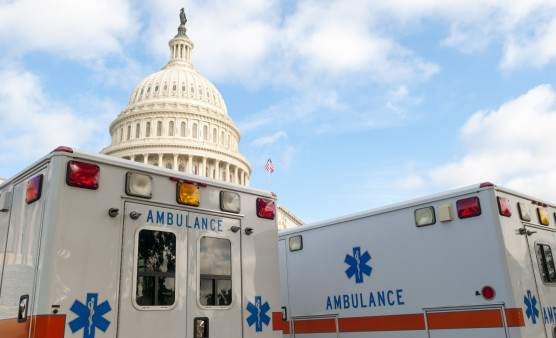While the world watched as Dr. Christine Blasey Ford painstakingly and agonizingly recounted the details of her high school sexual assault at the hands of Supreme Court nominee Brett Kavanaugh in front of the Senate Judiciary Committee on Thursday, other members of Congress were putting some of the finishing touches on the opioid legislation and appropriations bills they had been working on all summer.
Earlier this week, House and Senate negotiators came to a final agreement on a package of bills primarily aimed at addressing the opioid crisis and, to a lesser extent, the epidemic levels of substance use and overdose in the country as a whole. The bipartisan legislation, the SUPPORT for Patients and Communities Act, is expected to be voted on in the House by the end of this week before they adjourn for midterm recess and should be taken up by the Senate soon thereafter with the goal of getting the legislation on President Trump’s desk before the midterms.
This opioid legislation is already being touted by Republicans in Congress—particularly those up for reelection in November—as a major accomplishment that will go a long way toward curtailing and ultimately ending the opioid epidemic in America, but the content of the bill itself is far less impressive than the rhetoric surrounding it. Ultimately, the opioid bill has proven to be too little, too late, with nowhere near the government investment needed to properly address an epidemic of substance use that killed over 72,000 people in 2017. As a whole, this legislation takes bites around the edges of the opioid and substance use epidemics, but is a missed opportunity in large part due to its failure to include greater opportunities for harm reduction including specific funding for syringe access and engagement of people who use drugs.
We’ve analyzed the legislation and found the following items of note.
For starters, the final package details roughly $9.3 billion in funds, most of which comes from the reauthorization of existing programs, including $500 million annually in 21st Century CURES funding for FY19 through FY21. The legislation lifts for five years the IMD exclusion, which means a temporary repeal of a Medicaid rule that had previously prohibited those with substance use disorders from receiving Medicaid coverage for their substance-use disorder treatment at larger treatment centers. The opioid legislation also set aside $40 million to the CDC for surveillance, prevention, and education relating to HIV, viral hepatitis, and infective endocarditis. However, this money would need to be appropriated in FY20. In the FY19 LHHS bill, $5 million was set aside for a similarly named line item. The final bill also modestly expands access to Medication Assisted Therapy through a series of new grants and demonstration projects, broadens the availability of substance use treatment via telemedicine, and loosens restrictions on who is able to prescribe buprenorphine.
However, the Congressional opioid package is just as notable for what is not in it as for what is. Not included in the final bill was the SISTA Act, which would have empowered the attorney general to schedule and set penalties for the synthetic drug compounds and was opposed by criminal justice reform advocates, including Drug Policy Alliance. Also missing from the final product was language from the House version that would have made it easier to share a patient’s substance use treatment records with other health providers, weakening the confidentiality protections for people with substance use disorders (42 CFR Part 2). The final bill also rebuffed efforts from the pharmaceutical industry to include a provision that would provide drug companies with $4 billion in relief from Medicare Part D doughnut hole payments. All of these omissions to the final legislative package are supported by AIDS United and constitute a series of victories for drug user advocates.
Outside of the progress made on the opioid package, legislators have also made historic strides in the fiscal year 2019 appropriations process. On Wednesday, representatives voted 361-61 to pass a bill appropriating funds for the Departments of Defense; Labor, Health, and Human Services; Education; and other related agencies (“Defense/L-HHS”). The Senate passed the same legislation last week in a 93-7 vote. The bill will now be sent to President Trump for his signature. According to researchers at the Coalition for Health Funding, if he does sign, it will be the first time in over two decades that Labor-HHS has been funded before the end of the fiscal year. Though the president originally threatened a veto for any appropriations that did not reflect his budget priorities (and this bill certainly doesn’t), he is expected to sign the bill into law before the would-be October 1 shutdown, likely because of its attachment to Defense funding. These Defense/L-HHS appropriations include a continuing resolution for other federal agencies to be funded at fiscal year 2018 levels through December 7, giving legislators time to campaign ahead of midterms and to focus on other must-pass legislation and judicial nominations.
Congress Quietly Makes Progress on Its #Opioid Bill and FY19 Funding - Though not as great as Republicans claim, the opioid legislation includes victories for drug user advocates. by @AIDS_United http://ow.ly/tA4r30mfZDN








1 Comment
1 Comment